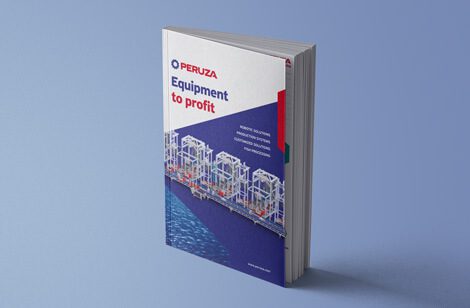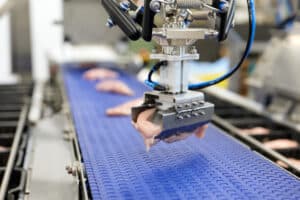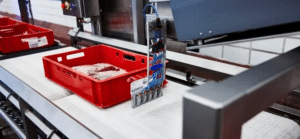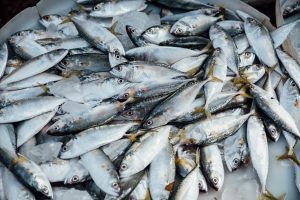Logistics in fish processing factories are pivotal in maintaining the freshness and quality of the catch. Once the fish arrives at the factory, it enters a coordinated system where conveyors, belts, and automated sorting mechanisms work seamlessly to transport the fish to each processing step efficiently. These advanced logistics systems ensure that the fish is quickly and hygienically handled, reducing the time it spends out of optimal storage conditions. Conveyors and belts transport the fish through various stages of processing, from grading and nobbing to packaging and palletizing. Streamlined logistics approach not only enhances the efficiency and productivity of the processing factory but also plays a critical role in delivering high-quality fish to consumers, ensuring that the fish we eat is as fresh and wholesome as possible.
The importance of the logistics in fish factory
Ensuring the freshness and quality of fish relies heavily on effective logistics, which include proper handling and timely transportation. From the moment fish are caught, they must be handled with care to prevent damage and contamination. Timely transportation is crucial: the quicker the fish moves from the ocean to processing facilities and then to markets, the fresher it remains. Conveyor technology plays a pivotal role in this process within processing facilities. These systems minimize the amount of manual handling required, thereby reducing the risk of spoilage and maintaining hygiene standards. Modern equipment, such as ultra-high hygienic conveyors and advanced processing equipment, ensures that fish remains at optimal temperatures throughout the supply chain. By integrating these technologies, the logistics process not only maintains the high quality of the fish but also ensures that consumers receive a product that is fresh, safe, and of the best possible quality.
Key steps in fish processing factory
The journey of fish from catch to consumer often involves several key steps within processing facilities, many of which rely heavily on conveyor systems to maintain efficiency and quality. When fish arrive at the factory, they are usually first graded where fish is sorted by size, species or weight. This ensures that each type of fish is directed to the appropriate processing area and improves the quality. Next, the fish typically move along conveyors to the nobbing and filleting stations, where, for example, PERUZA Pocket type fish nobbing and filleting machine removes heads and tails and make fillets of the fish. After filleting, the fish are often batched into groups suitable for further processing or packaging, with conveyors efficiently moving these batches to the next stage. We are proud that one of the top batchers in the market is PERUZA Full Speed Batcher where speed and precision go hand in hand (see more about batcher here). The freezing process usually follows, with fish being quickly frozen on conveyors that move through specialized freezing tunnels. Once frozen, the fish are packed into containers or boxes, ensuring that each package is properly sealed and labeled. Finally, the packed fish are palletized, often using automated PERUZA palletizer High Speed Palletizer that stacks and organize the packages on pallets, ready for storage or transport. This use of conveyors throughout the process helps streamline operations, reduce handling times, and maintain the highest quality standards for the fish.
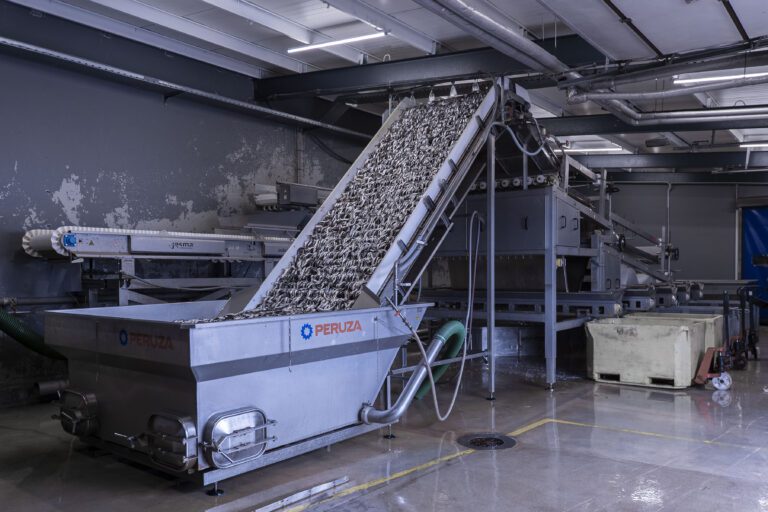
Incline conveyor is feeding fish to PERUZA Roller Grader
To sum up
In conclusion, logistics in fish processing factories are essential for maintaining the freshness and quality of the catch. From the moment fish arrive at the factory, they are efficiently transported through various processing stages using advanced systems such as conveyors and automated sorting mechanisms. These technologies ensure that fish are handled quickly and hygienically, minimizing the time spent out of optimal storage conditions. The use of conveyors and belts in grading, nobbing, filleting, batching, freezing, packaging, and palletizing significantly enhances the efficiency and productivity of the processing factory. This streamlined logistics approach is crucial in delivering high-quality fish to consumers, ensuring the fish we eat is as fresh and wholesome as possible.


